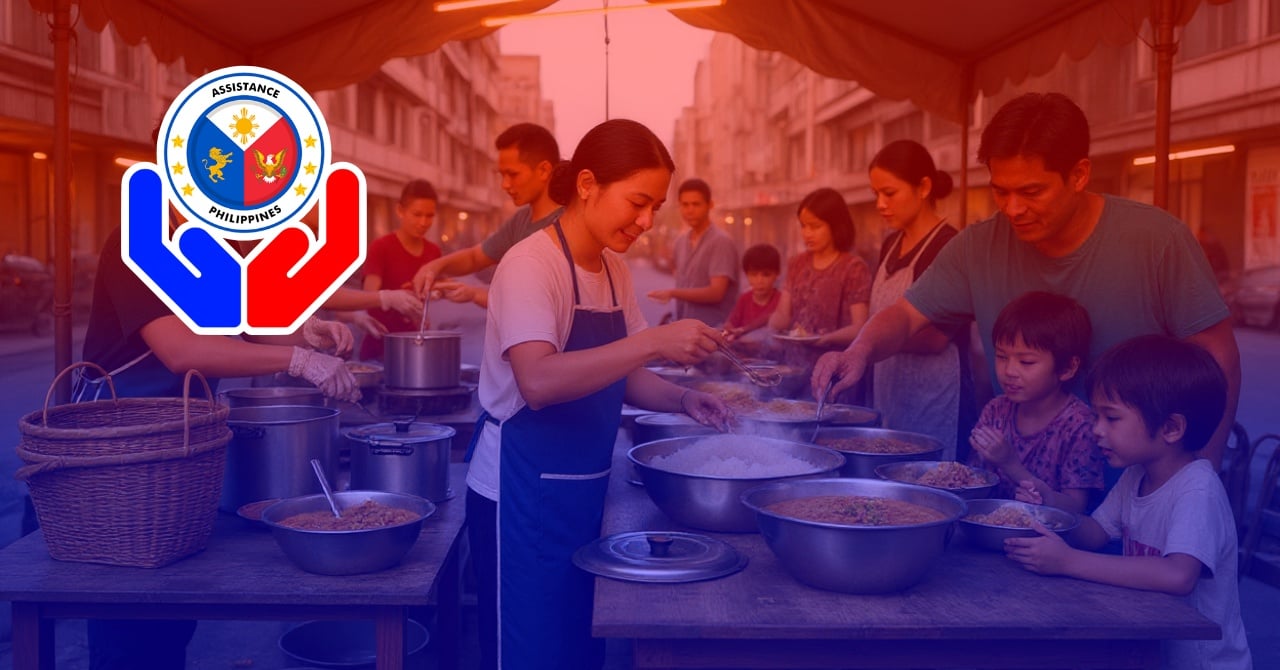In many parts of the Philippines, an empty stomach can keep a child from learning. But through Republic Act No. 11037—also known as the Masustansyang Pagkain para sa Batang Pilipino Act—communities across the country are stepping in to help fight child hunger.
This law doesn’t just provide free meals in schools. It brings together parents, teachers, farmers, local governments, and volunteers to make sure every child has a fair shot at a healthy, nourished future.
Here’s how RA 11037 works, who it helps, and why local communities are key to its success.

Who Benefits from the RA 11037 Feeding Program?
RA 11037 covers two major government feeding programs:
School-Based Feeding Program (SBFP)
Run by the Department of Education (DepEd), the SBFP supports public school students from Kindergarten to Grade 6 who are:
- Wasted or severely wasted
- Stunted or severely stunted
- At risk of dropping out (PARDO)
- Indigenous learners
- From indigent households (as funds permit)
Each student gets one nutritious fortified meal every school day for at least 120 days per year.
Supplementary Feeding Program (SFP)
Led by the Department of Social Welfare and Development (DSWD), this targets children aged 3 to 5 in:
- Supervised neighborhood play groups
- Child development centers
- Home-based daycares
Children receive hot meals or food packs as extra nourishment in addition to regular meals.
What Kind of Food Is Served? (Menu Standards)
RA 11037 doesn’t allow just any kind of meal. It defines strict menu standards to make sure children get real nourishment:
Fortified Meals
Each meal must meet at least one-third of the child’s daily needs for:
- Calories (400–700 kcal)
- Protein (15–20g)
- Iron and Vitamin A
Cycle Menus
Schools and LGUs use 7- to 20-day cycle menus, which rotate recipes to include:
- Local produce from nearby farmers
- Enhanced Nutribuns or Milky Buns
- Fortified rice, vegetables, root crops, eggs, and native fruits
Cultural Relevance
Menus are adapted based on region, food availability, and religious or cultural food preferences. They also align with DOST-FNRI and National Nutrition Council guidelines.
What Communities Actually Do Under RA 11037
The heart of RA 11037 lies in community ownership. It’s not just a government program—it’s a people-powered solution.
Here’s how different sectors work together:
Parent Volunteers
Parents are trained and organized into SBFP Core Groups. They:
- Help prepare or distribute food
- Provide reusable utensils
- Supervise children during home-based feeding
- Wash, clean, and maintain feeding areas
Local Gardens & Food Supply
RA 11037 encourages every school to grow a Gulayan sa Paaralan (vegetable garden). For schools with no land, vertical or hydroponic gardens are allowed. Parents are also urged to grow similar home gardens to support nutrition at home.
Local Governments (LGUs)
LGUs may use development funds to:
- Support community kitchens
- Build feeding centers
- Hire workers or service providers (e.g., livelihood groups or cooperatives)
They also help track nutrition results, food safety compliance, and fund liquidation.
Health and Education Workers
Barangay health workers, teachers, and social workers help monitor:
- Child weight and height
- Attendance and participation
- Health improvements throughout the program
Penalties for Misuse and How Accountability Works
RA 11037 doesn’t take fund misuse lightly. While it doesn’t spell out specific jail time, there are built-in safeguards:
DepEd Orders empower regional and division offices to:
- Withhold funding from schools with unliquidated expenses
- Sanction school heads and feeding coordinators who violate rules
Administrative Sanctions
Violators of DepEd guidelines (e.g., falsifying reports or mismanaging food) can face suspension or disciplinary action.
Transparency and Liquidation
Funds must be properly liquidated through standardized community-based reporting systems. Unused or misused funds trigger suspension of future releases.
To better understand the provisions of this law, you may refer to the IRR released by DepEd:
DepEd-IRR-RA-11037Community Kitchens in Action
In areas like Legazpi City and Iloilo, the central kitchen model has transformed feeding programs. Instead of each school preparing its own food, LGUs run a central kitchen with trained cooks and parent volunteers. The meals are prepared in bulk and delivered to multiple schools—ensuring quality, hygiene, and cost-efficiency.
This setup fosters accountability, creates jobs, and makes feeding more reliable—even during disasters or pandemics.
Frequently Asked Questions (FAQ)
Q: Can private schools join this program?
A: No. RA 11037 currently applies to public schools and community day care centers only.
Q: Are children required to join?
A: Participation is encouraged but not mandatory. However, many schools integrate feeding schedules into the class day.
Q: What happens to schools that fail to comply?
A: DepEd or DSWD may withhold funding or reassign responsibilities. School heads can face administrative action for violations.
What Filipinos Say About RA 11037
From community kitchens to home feeding:
“Nagulat ako—’di lang pagkain, pati volunteers involved. Nagtutulungan talaga buong barangay.”
– A parent from Iloilo on the central kitchen setup
“Dati isang banana lang ang baon ng anak ko. Ngayon, may gulay at kanin pa.”
– Daycare mother, Quezon City
“Mas ganado sila pumasok. ‘Yung pagkain naging incentive na rin.”
– Public school teacher, Zamboanga
Conclusion
RA 11037 is more than a law. It’s proof that fighting hunger doesn’t start with handouts—it starts with shared responsibility. By engaging parents, schools, health workers, farmers, and local officials, it ensures that no child is left to learn on an empty stomach.
In every vegetable garden, ladle of soup, and lunch tray served, there’s a community showing up for its children. And that’s how real change begins.
